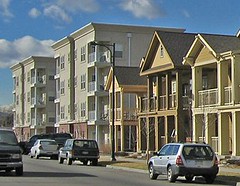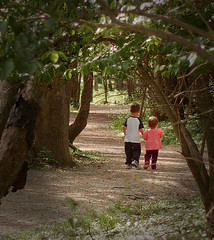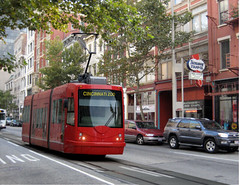Seven rules for sustainable communities

Posted September 17, 2010 at 1:27PM
Patrick Condon, senior researcher at the Centre for Sustainable Design at the University of British Columbia, has a new book, Sustainable Communities: Design Strategies for the Post Carbon World. (I have the book but so far have only leafed through it.) He has begun posting excerpts on the BC-based website The Tyee, and the first excerpt introduces readers to the seven rules. They are very hard to argue with:
“Streetcar cities are characterized by easy access to transit, a wide variety of house types, and services and job sites very close at hand -- the exact elements of a sustainable city.”
2. Design an interconnected street system
“Fine-grain interconnected street networks ensure that all trips are as short as possible, disperse congestion and are compatible with walking, biking and transit.”
3. Locate commercial services, frequent transit and schools within a five-minute walk
“The most important walking destinations are the corner store and a transit stop. A minimum gross density of 10 dwelling units per acre is required for this to work. “
4. Locate good jobs close to affordable homes
“The vast majority of new jobs in the United States and Canada are compatible with complete community districts.”
 5. Provide a diversity of housing types
5. Provide a diversity of housing types
“Communities designed for only one income cannot be complete, and when repeated throughout the region, they add to transportation problems. “
6. Create a linked system of natural areas and parks
“Keeping our waters clean and our streams and rivers healthy requires a rethinking of urban drainage systems and stream protection policies . . . Far from protecting these systems through restriction, these systems must form the public space armature of new and restored communities.”
7. Invest in lighter, greener, cheaper and smarter infrastructure
“Exaggerated municipal standards for roads and utilities cost too much to build and maintain, and they destroy watershed function. Smarter, cheaper and greener strategies are required.”
I love these. In the excerpt, Condon traces the factors and patterns associated with late-20th-century sprawl and emphasizes the bleak prospects we are facing if we do not reduce carbon emissions associated with driving. 
As Condon puts it:
“If we change the way cities are built and retrofitted, we can prevent the blackest of the nightmare scenarios from becoming real and can create the conditions for a livable life for our children and grandchildren. It is not apocalyptic to say we can save their lives.”
In a sense, the emphasis on emissions makes today’s post a logical companion to yesterday’s, which detailed the risks from tailpipe pollutants that are directly harmful to human health. But, as one of the commenters on yesterday’s post stressed, the benefits of smart growth and sustainability strategies such as those listed above go far beyond those associated with emissions: “Communities that focus on more urban, walkable designs enjoy more close-knit communities, easier access to jobs, medical care, and other opportunities.” The list expands further, of course, especially when one adds sustainability factors that go beyond the design of the built environment to health, equitable and green economic development, and more.
In the meantime, the seven rules form a very clear, succint and worthy list. Read Condon’s full post here.
Move your cursor over the images for credit information.
